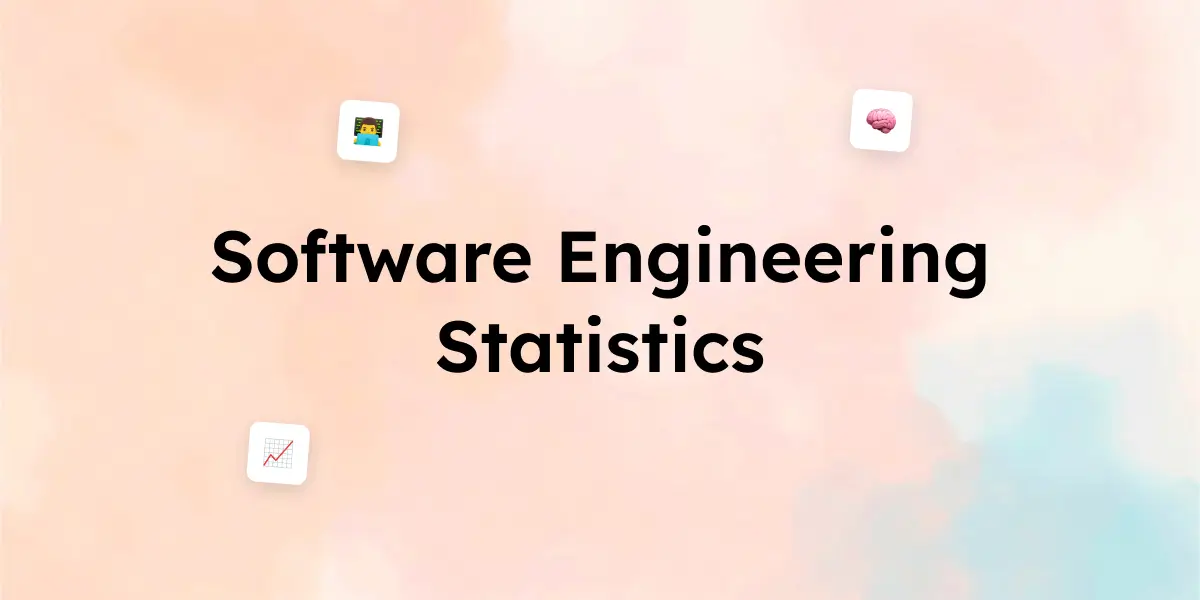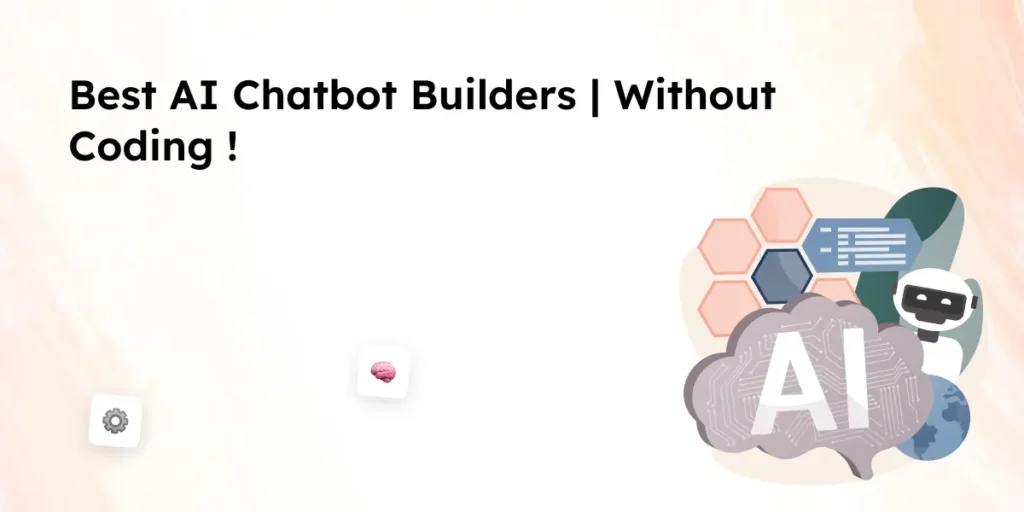Software engineering is evolving at an unprecedented pace, driven by advancements in AI, cloud computing, DevOps, and security. In 2025, software developers need to stay updated with the latest trends, tools, and industry statistics to remain competitive. From the dominance of AI-assisted coding to the increasing demand for cloud-based solutions, the software landscape is more dynamic than ever.
This report compiles 40 essential statistics that every software engineer, developer, and tech leader should know in 2025. These insights cover industry growth, salaries, programming languages, AI automation, security threats, and more—providing a data-driven overview of where software development is headed.
40 Software Engineering Statistics
1. Industry Growth & Job Market 📈
- The global software development market is projected to reach $1.35 trillion by 2025.
- By 2030, the demand for software developers is expected to grow by 22% (much faster than most professions).
- The U.S. alone has over 4.3 million software developers in 2025.
- 58% of developers say they are open to new job opportunities.
- Remote work is now the norm, with 74% of software engineers working fully or partially remotely.
2. Programming Languages & Trends 🖥️
- JavaScript remains the most widely used language in 2025, with 68% of developers using it.
- Python has overtaken Java as the second most popular language, growing 20% YoY.
- Rust continues to be the most loved programming language for the 5th year in a row.
- Go and Kotlin are seeing rapid adoption in backend development.
- Low-code and no-code tools are expected to account for 30% of all new applications.
3. AI & Automation in Development 🤖
- 85% of developers use AI-powered coding assistants like GitHub Copilot or ChatGPT for productivity.
- AI-assisted coding can boost developer productivity by 30-50%.
- Over 60% of organizations are investing in AI-driven software testing tools.
- AI is expected to automate 30% of repetitive coding tasks by 2026.
- DevOps automation adoption has increased by 40% since 2023.
4. Software Engineering Salaries 💰
- The average salary for a software engineer in the U.S. is $135,000 in 2025.
- Senior engineers and specialists (e.g., AI engineers) can earn $180,000+ annually.
- Remote software developers earn 20% more on average than in-office engineers.
- Freelance software developers charge between $50–$150 per hour, depending on expertise.
- Silicon Valley developers still command the highest salaries, with an average of $160,000.
5. Software Development Methodologies & Productivity 🚀
- 70% of teams follow Agile methodologies.
- Scrum remains the most popular Agile framework, used by 58% of teams.
- Pair programming and code reviews reduce software defects by 40%.
- Continuous Integration/Continuous Deployment (CI/CD) adoption has increased by 60%.
- Developer burnout remains a major issue, with 48% reporting stress due to tight deadlines.
6. Security & Cyber Threats 🔐
- 95% of software vulnerabilities are due to human errors in coding.
- Ransomware attacks on software companies have increased by 35% YoY.
- Only 30% of developers say they receive adequate security training.
- The average cost of a software security breach is $4.45 million.
- Zero-trust security is now implemented in 80% of organizations.
7. Cloud & DevOps Trends ☁️
- 90% of companies use cloud-based development environments.
- Docker and Kubernetes dominate DevOps, used by 78% of teams.
- Serverless computing is expected to grow by 25% annually.
- Edge computing adoption has increased by 45% since 2023.
- Microservices architecture is used in 72% of new applications.
8. Open Source & Community Involvement 🌍
- Over 80% of developers contribute to open-source projects.
- GitHub now hosts 500+ million repositories in 2025.
- Stack Overflow engagement has declined by 15% due to AI-driven solutions.
- Hackathons and coding competitions have seen a 50% increase in participation.
- Dev communities (like Discord and Reddit) are the primary learning hubs for developers.
Conclusion
As we move further into 2025, the role of software engineers is becoming increasingly complex and impactful. AI-driven development, automation, and security concerns are reshaping the way software is built and deployed. Staying ahead requires continuous learning, embracing new technologies, and adapting to industry shifts.
Key takeaways include:
✅ AI and automation are enhancing productivity but also reshaping job roles.
✅ Security remains a top concern, with rising cyber threats.
✅ Remote work and cloud-based development are now the norm.
✅ Programming languages like Python, JavaScript, and Rust continue to dominate.
✅ DevOps, microservices, and CI/CD are now essential for modern software development.
By leveraging these insights, developers can make informed career and technology choices in 2025 and beyond.
FAQs
1. What is the most in-demand programming language in 2025?
JavaScript remains the most widely used programming language, while Python continues to grow rapidly due to AI, data science, and backend development. Rust is also gaining traction for its performance and security benefits.
2. How is AI impacting software development in 2025?
AI-driven coding assistants (like GitHub Copilot and ChatGPT) are improving productivity by automating repetitive tasks and generating code snippets. AI is also transforming testing, debugging, and DevOps automation.
3. What are the biggest challenges for software engineers in 2025?
The top challenges include keeping up with rapidly evolving technology, ensuring software security, managing increasing workloads, and preventing burnout due to tight deadlines.
4. How much do software engineers earn in 2025?
The average software engineer salary in the U.S. is $135,000 per year, with specialists (e.g., AI engineers) earning up to $180,000+. Remote developers typically earn 20% more than in-office engineers.
5. What are the latest trends in DevOps and cloud computing?
DevOps is now heavily automated, with Docker, Kubernetes, and CI/CD pipelines being standard. Cloud-native development is dominant, with 90% of companies using cloud-based environments. Serverless computing and edge computing are also on the rise.
Sources for These Statistics :
The data in this report has been gathered from reliable industry reports, developer surveys, and tech research firms. Here are some key sources:
📌 Stack Overflow Developer Survey 2025 (stackoverflow.com)
📌 GitHub Octoverse Report 2025 (github.com)
📌 JetBrains Developer Ecosystem Report 2025 (jetbrains.com)
📌 SlashData Developer Nation Report 2025 (slashdata.co)
📌 IEEE Spectrum Programming Language Rankings 2025 (ieee.org)
📌 Glassdoor & Payscale Salary Reports (glassdoor.com, payscale.com)
📌 Cybersecurity Ventures Report 2025 (cybersecurityventures.com)
📌 Cloud & DevOps Adoption Reports from Gartner & IDC (gartner.com, idc.com)



